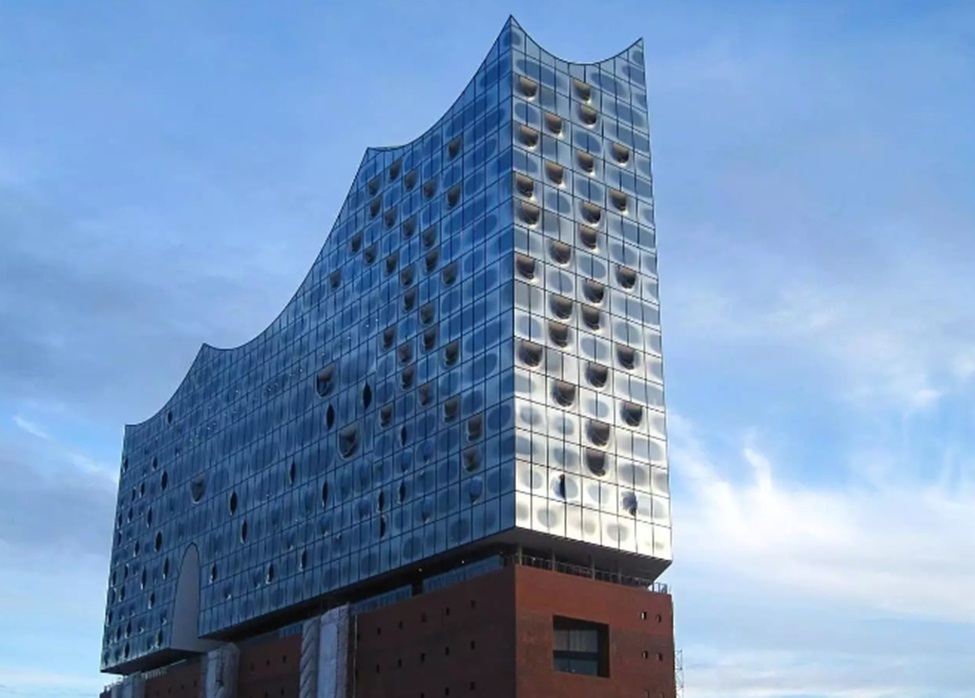
The exterior of a commercial building serves as its first impression, conveying a message about the business it houses. Commercial siding plays a crucial role in defining the aesthetic appeal, durability, and overall functionality of the building. In this comprehensive guide, we’ll explore everything you need to know about siding, from its importance and benefits to the different types and considerations for choosing the right siding for your property.
Understanding Commercial Siding
Siding refers to the exterior cladding or covering of a commercial building. It serves multiple purposes, including protecting the building from the elements, enhancing its appearance, and providing insulation. Siding comes in a variety of materials, styles, and colors, allowing business owners to customize the exterior of their building to suit their branding and design preferences.
Importance of Commercial Siding
The siding of a commercial building plays a crucial role in creating a positive impression on customers, clients, and visitors. It serves as a protective barrier against weather elements such as rain, wind, and UV rays, helping to preserve the structural integrity of the building and prevent damage over time. Additionally, siding can contribute to energy efficiency by providing insulation and reducing heat loss or gain, ultimately lowering heating and cooling costs for the business.
Benefits of Commercial Siding
Investing in high-quality siding offers several benefits for business owners:
- Enhanced Curb Appeal: Siding can significantly enhance the visual appeal of a building, making it more attractive to potential customers and clients.
- Durability and Longevity: Quality siding materials such as vinyl, fiber cement, and metal are highly durable and resistant to rot, pests, and moisture damage, ensuring long-term protection for the building.
- Low Maintenance: Many types of siding require minimal maintenance and upkeep, saving time and money for business owners.
- Energy Efficiency: Insulated siding options can improve the building’s energy efficiency, reducing heating and cooling costs and creating a more comfortable indoor environment.
Types of Commercial Siding
There are several types of siding materials available, each with its own unique features, advantages, and considerations:
- Vinyl Siding: Vinyl siding is a popular choice for commercial buildings due to its affordability, low maintenance requirements, and wide range of colors and styles.
- Fiber Cement Siding: Fiber cement siding offers durability, fire resistance, and versatility, making it suitable for a variety of commercial applications.
- Metal Siding: Metal siding, such as aluminum or steel, provides strength, longevity, and modern aesthetics, making it ideal for contemporary commercial buildings.
- Wood Siding: Wood siding offers natural beauty and charm, but it requires more maintenance and may be susceptible to rot and insect damage.
Considerations for Choosing Commercial Siding
When selecting siding for your building, there are several factors to consider:
- Budget: Determine your budget for the siding project, including material costs, installation fees, and any additional expenses.
- Aesthetics: Choose siding materials, colors, and styles that complement the architectural style of the building and align with your brand image.
- Climate and Weather Conditions: Consider the climate and weather conditions in your area, as certain siding materials may perform better in specific environments.
- Maintenance Requirements: Evaluate the maintenance needs of different siding materials and choose one that fits your maintenance preferences and schedule.
Installation Process
The installation of siding is a complex process that should be performed by experienced professionals. The process typically involves:
- Preparation: This includes removing old siding, repairing any underlying structural issues, and preparing the surface for installation.
- Installation: Siding panels or sheets are carefully installed according to manufacturer specifications, ensuring proper alignment and attachment.
- Finishing: Trim pieces, corner caps, and other finishing touches are added to complete the installation and create a polished look.
- Inspection: The finished installation is inspected to ensure that it meets quality standards and adheres to building codes and regulations.
Maintenance Tips
To prolong the lifespan of your siding and keep it looking its best, consider the following maintenance tips:
- Regular Cleaning: Clean the siding periodically using a mild detergent and water to remove dirt, debris, and mildew.
- Inspection: Inspect the siding for signs of damage or wear, such as cracks, warping, or loose panels, and address any issues promptly.
- Repairs: Repair or replace damaged siding as needed to prevent further damage and maintain the integrity of the building’s exterior.
- Sealing and Caulking: Check and replace caulking and sealing around windows, doors, and seams to prevent water infiltration and air leaks.
Conclusion
In conclusion, siding is a critical component of any commercial building’s exterior, providing protection, insulation, and aesthetic appeal. By understanding the importance of siding, its benefits, types, considerations, and maintenance tips, business owners can make informed decisions when choosing and maintaining siding for their properties. Whether you’re upgrading an existing building or constructing a new one, investing in high-quality commercial siding can enhance your building’s exterior and create a lasting impression on customers, clients, and visitors.



